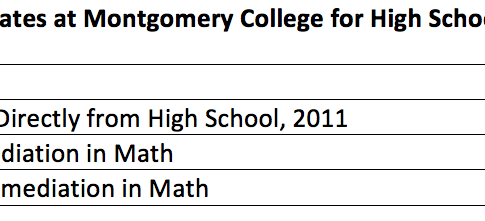America has nearly 12,000 school superintendents, of whom the overwhelming majority are career educators who have taught in the classroom and risen through the administrative ranks of public education. Most are middle-aged-to-older white males—and almost half say they will retire within five years.
You wouldn’t necessarily expect them to be ardent change-agents. They’ve lived and worked within this system and will benefit from its pensions in retirement. Why make waves?
To be fair, some are earnest, tireless, and imaginative reformers, bent on altering public education so that it better serves the country’s girls and boys. Among the most nationally visible of these have been Michelle Rhee, Joel Klein, Kaya Henderson, Tom Boasberg, John Deasy, Jean-Claude Brizard, and Andres Alonso. (Several of these, of course, followed non-traditional paths to the corner office.) Others, just as committed to major overhauls, are well known only in their communities, such as Cleveland’s Eric Gordon, Cincinnati’s Mary Ronan, and Dayton’s Lori Ward (if only she had a supportive board). These people strike sparks and light fires.
But thousands of superintendents are more set in their ways, sometimes firefighters but rarely kindlers. They preside (often ably) over “the system as we know it”: holding staff meetings, preparing budgets, meeting with their boards, entering into bus contracts, negotiating with their unions, promoting from within, and generally operating as the current heads of complex, enduring, and essentially complacent organizations that evolve slowly—mainly at the margins and without any particular impulse to change more or faster.
And then there’s Joshua P. Starr and a few more like him who have emerged in recent years as fully fledged anti-reformers, pushing back as hard as they can against the sorts of changes that the Joel Kleins, Arne Duncans, and Jeb Bushes are striving to make.
Starr is the school superintendent in Montgomery County, Maryland, where I live, a role he has occupied for a year and a half, following a half-decade in the same role in Stamford, Connecticut. He’s very bright, incredibly energetic, exceptionally articulate, and well-credentialed.
He’s also become perhaps the foremost critic of contemporary education reform in the Washington metropolitan area, outstripping anyone in the teacher unions, think tanks, or government. You can see and hear him in action at a recent Washington Post forum and read the Post’s thorough account of his views.
Starr is against testing, against achievement-linked teacher evaluations (“bad science”), and against Race to the Top—dollars from which Montgomery County eschewed, even when Maryland won the competition. He’s called for a three-year moratorium on standardized testing. He appears cool toward the Common Core (though Maryland has adopted it and he will have to deal with it). On the choice front, Starr (like his predecessor, Jerry Weast) thinks the central office knows best, hence is colder than cool when it comes to charter schools. (Sprawling Montgomery County operates 205 district schools for its 144,000 pupils but has granted exactly one charter.) Though the system has some magnet schools and special programs, students are generally assigned to the schools the administration wants them to attend; opting into other schools is the exception, not the rule. (At the secondary level, there are several high school “consortia” with lottery-based admission.)
Admittedly, any Montgomery County superintendent has grounds for steering a steady course rather than promoting radical change: The school system has long enjoyed a reputation as one of the country’s best. Weast was much praised as a successful education leader, not least because of the progress the district made on his watch in reducing achievement gaps, boosting graduation rates, expanding AP enrollments, and more. Stacey Childress, Denis Doyle, and David Thomas chronicled all this in their 2009 book Leading for Equity. And the following year, Montgomery County was a finalist for the Broad Prize. Though Charlotte-Mecklenburg won that year, the system Starr was about to take charge of made a very respectable showing on the metrics that Broad respects.
Yes, it’s a good school system. It is also, for the most part, a prosperous, upscale system, much like Starr’s previous Connecticut venue. And of course, it’s expensive: For the next fiscal year, Starr has asked the county for a $49-million increase over the current budget, amounting to a total of $2.22 billion, which works out to $15,280 per pupil. The school system employs 22,230 people—one grown-up for every 6.5 kids. That’s a lot.
Should districts like Montgomery County—doing pretty well and generally content with what they’ve got—be subject to big sweeping reforms imposed by state or national governments? A legitimate question, to be sure, and there’s no denying that much of the backlash against big reforms arises from people who sincerely believe that such districts don’t need to change in big ways. Should reformers just leave them alone and honor the principle of “local control” in situations like Montgomery County? Should they tailor their reforms to sorely troubled situations and persuade lawmakers to write statutes and regulations that apply only in such situations?
Sometimes they probably should. There’s more grief than gain ahead when the state or federal government imposes a new teacher-evaluation system or charter school mandate on places that don’t want them—and that, by common consent (including at least the appearance of agreement by their own voters, taxpayers, and parents), are doing pretty well.
But in those situations, it’s vital to impose transparency via external audits and comparisons that such districts aren’t apt to do for themselves. How do 8th graders in Montgomery County compare—not just with each other or with Baltimore, but with Korea and Finland? Which schools are working well, and which really aren’t? Which truly “add value” to their pupils, and which just take smart, well-parented, upper-middle-class kids and keep them that way? How much per pupil does this system spend on special education versus the national average, and how many special-needs kids graduate from high school? How many of the kids taking AP courses then pass the AP exams? How many minority students are enrolled in the district’s International Baccalaureate program, and what is their rate of success? How many graduates of the county’s high schools must still take remedial courses in college? How many “eligible” students cannot get into “gifted and talented” classrooms due to the paucity of such programs? How many are turned away from the county’s acclaimed Montgomery Blair magnet high school program (which takes just 100 kids per year)? And much more.
Just as important is transparent information on who makes these policy decisions; who pulls their strings; and their views on what’s good, bad, and ugly. I’ve written before that as a Montgomery County voter, I find it next to impossible to get accurate information on the candidates for school board, even when I try. Yet it’s the board that picks the superintendent and—in a high-spending county in a heavily taxed, deep-blue state with a history of giving public-employee unions just about everything they ask for, including big policy wins—there is ample reason to suspect that the superintendent is, in effect, hired by the teacher union. How can voters determine this? Only if someone makes it their business to ferret out and make public all the relevant information on the politics as well as the performance of the system and those who run it.
Montgomery County (and other districts like it) needs a versatile, smart, and courageous education-advocacy organization to make sure that the interests of school-system employees and their friends don’t trump those of children (and taxpayers). Today it doesn’t have one—nor, to my knowledge, does it have anyone to point out the things that aren’t working, the kids who are badly served, the schools that are poorly led, the choices that don’t really exist, and all the other things that the system is not keen to make known.
In short, I’m saying that Starr is (of course) free to say whatever he likes, and so long as his district is performing well, there is no reason to impose scads of state and federal mandates on it. But those other levels of government, as well as employers, civic groups, philanthropists, and the media have a parallel obligation to bring all the relevant information into public view, about the system and also about who governs it. Local control in a democratic system is only as good as the means whereby it is exercised, ultimately by thoroughly informed voters. Who knows—it might even turn out that the children of Montgomery County would also benefit from some of those reforms that their superintendent is becoming famous for denouncing.
-Chester E. Finn, Jr.
This blog entry first appeared in the Fordham Institute’s Education Gadfly Weekly.




